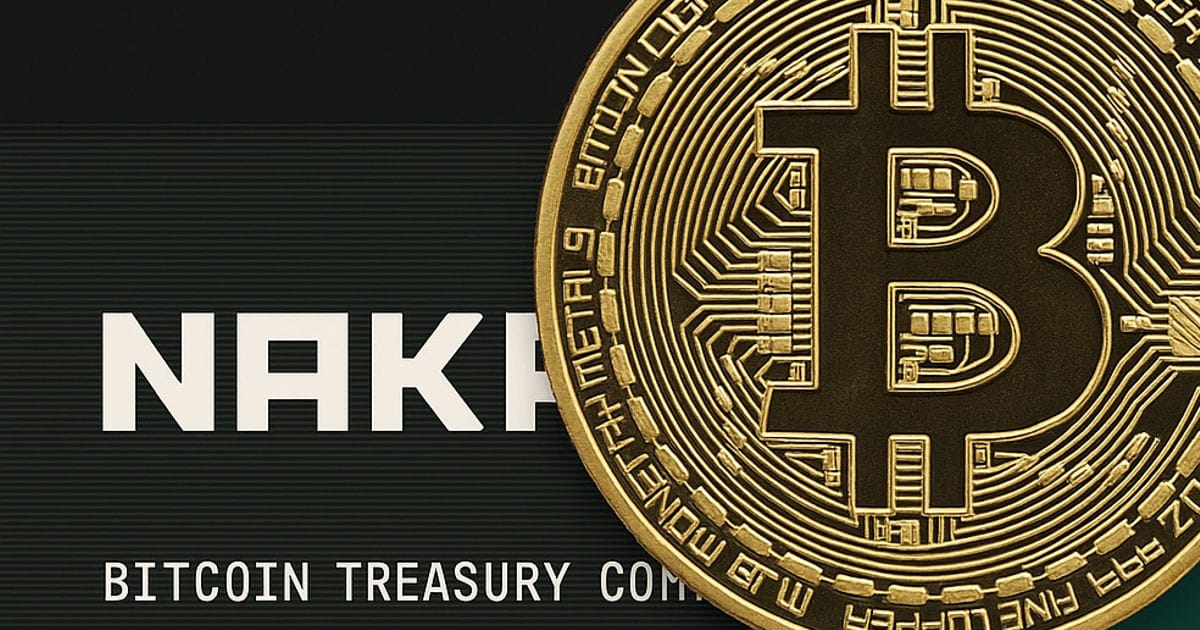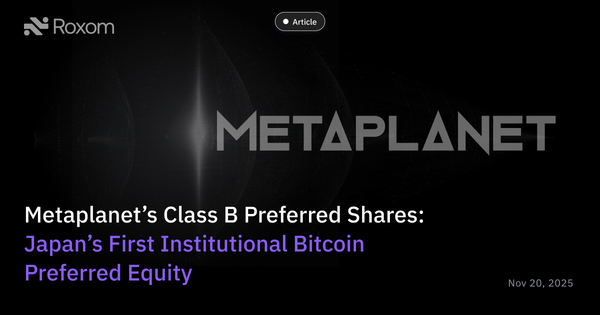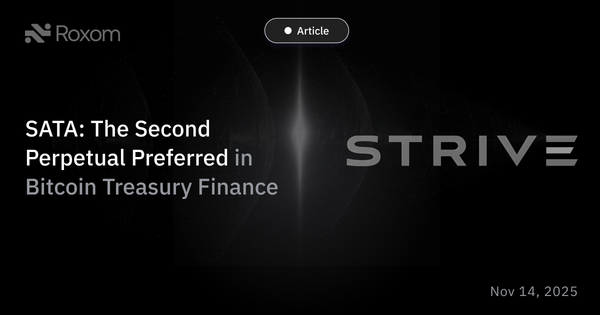Why NAKA Collapsed 90% From Its Peak: The Anatomy of a PIPE Unwind

NAKA was pitched as the “first Bitcoin-native holding company,” born out of KindlyMD’s reverse merger with Nakamoto Holdings. Within months of its debut, the stock soared on hype around its Bitcoin treasury strategy. But today, it trades nearly 90% below its peak.
This isn’t just a story about Bitcoin volatility, it's about PIPE financing (Private Investment in Public Equity) and how it can set retail investors up for brutal dilution and sudden supply shocks.
The Setup: A Bold Bitcoin Pivot
When KindlyMD agreed to merge with Nakamoto Holdings in mid-2025, the vision was radical: abandon its medical-clinic roots and rebrand as NAKA, a company dedicated to accumulating Bitcoin and building Bitcoin-aligned businesses.
To fund this pivot, the company turned to PIPE financing. Within 72 hours, it raised $51.5 million at $5.00 per share, an oversubscribed deal that was earmarked primarily to buy Bitcoin for the new treasury. That PIPE alone was larger than KindlyMD’s pre-deal market cap, instantly handing control to new investors while sidelining legacy shareholders.
But that was just the beginning. On August 14, 2025, as the merger closed, the company filed an 8-K showing the full capital structure:
- 323 million new shares at $1.12
- 5.7 million shares at $5.00
- 133.8 million pre-funded warrants
Gross proceeds exceeded $540 million, all aimed at building a Bitcoin reserve. For context, the company had fewer than 20 million shares outstanding pre-merger so this was effectively a complete recapitalisation.
What Is a PIPE, and Why Does It Hurt Retail?
A PIPE lets institutions buy stock (or stock-linked securities) privately, usually at a discount and often with warrants or convertible debt attached. For the issuer, it’s fast capital. For the investor, it’s a sweetheart deal: cheap entry, upside optionality, and protections that retail shareholders don’t get.
The problem comes later:
- Dilution — New shares balloon the outstanding count, shrinking each existing shareholder’s slice of the pie.
- Unlocks — PIPE shares start as restricted, but once a resale registration statement goes effective (an S-3 filing), investors can dump into the open market.
- Supply Shock — Retail investors are rarely ready for the tidal wave of stock hitting the tape, especially in thinly traded names.
PIPE investors usually profit; retail holders usually eat the loss.
The Trigger: Resale Registration and Mass Selling
That’s exactly what happened with NAKA. On September 12, 2025, the company filed its S-3 registering those PIPE shares for resale. Management even warned shareholders in a letter that the new supply could bring “heightened volatility” and told short-term traders to exit if they weren’t ready for the ride.
The warning became a self-fulfilling prophecy. Within two trading days:
- The stock plunged 55% in a single session as PIPE investors began unloading.
- Coverage emphasized that NAKA now traded below the value of its reported Bitcoin holdings, showing how fear of dilution outweighed even hard-asset backing.
By late September, NAKA was down over 90% from its May highs, erasing billions in market cap.
Why the Fall Was So Extreme
Several dynamics amplified the collapse:
- Enormous Dilution The PIPE tripled the share count. Legacy holders instantly owned a fraction of what they did before.
- Multiple Price Anchors Some PIPE investors were in at $5.00, others at $1.12. That meant a wide range of holders could sell profitably even at collapsing prices, creating relentless selling pressure.
- Pre-Funded Warrants These instruments act like shares waiting to hit the market. Even if not exercised immediately, investors know they’re coming and markets discount future dilution early.
- Management Messaging The CEO’s letter essentially separated “diamond hands” from “paper hands.” Traders took the hint and bolted, accelerating the drop.
NAV Discount Even though NAKA’s treasury held Bitcoin, the equity traded at a discount to that NAV. Why? Because investors priced in governance risk, capital structure complexity, and fears of further dilution.
Why NAKA Looks Interesting Now
Paradoxically, the same mechanics that crushed NAKA’s stock may make it attractive at these levels:
- Stock at a discount to NAV: With the equity now trading below the value of the Bitcoin on its balance sheet, investors are effectively getting Bitcoin exposure at a markdown.
- Forced selling already happened: Much of the collapse was due to PIPE shares hitting the tape. Once that supply is absorbed, the overhang lessens and the stock can normalize closer to NAV.
- Gateway to Discounted Bitcoin Plays: Buying NAKA today could also give investors access to opportunities beyond its own balance sheet. Recently, NAKA itself invested $30 million in Metaplanet’s international offering, which was priced at a 10% discount. In effect, by holding NAKA stock, you indirectly gain exposure to these discounted raises in other Bitcoin Treasury Companies (BTCTCs) that would otherwise be unavailable to public investors. At current depressed prices, NAKA not only offers Bitcoin at a discount to NAV but also serves as a gateway into secondary market deals that typically only private funds or strategic investors can access.
Leverage to recovery: If Bitcoin rallies and NAKA manages capital raises more carefully going forward, the upside could be amplified. The stock could re-rate not just to NAV, but potentially trade at a premium like MicroStrategy has in past bull markets.
Lessons for Investors
The NAKA saga is a stark reminder that a Bitcoin balance sheet doesn’t protect equity holders from financing mechanics.
- Retail is last in line. PIPE investors negotiated their terms upfront. They had discounts, warrants, and exit rights. Retail bought at market and took the brunt of the fallout.
- Supply shocks matter. When hundreds of millions of shares suddenly become sellable, prices collapse regardless of the “story.”
- NAV ≠ Floor. A company can hold Bitcoin, but its stock can still trade below that value if shareholders don’t trust management or expect continued dilution.
- Communication is critical. Telling traders to exit right before a flood of supply only amplified panic.
- But deep discounts create opportunity. Once the overhang clears, buying equity below NAV is like buying BTC at a discount a rare setup that can reward patient investors.
Conclusion
NAKA’s 90% drawdown wasn’t caused by Bitcoin’s price action. It was the direct result of PIPE financing mechanics colliding with market psychology.
For institutions, PIPEs can be lucrative entry points into Bitcoin-exposed companies. For retail investors, they often mean buying into hype at the top and holding the bag when the unlock wave hits.
But at current levels, with the stock trading at a deep discount to its Bitcoin NAV, NAKA may be shifting from cautionary tale to speculative opportunity. For those willing to stomach volatility, it could be a way to gain discounted access to Bitcoin exposure, much like private investors in Metaplanet’s 10% discounted raise.
The difference is, NAKA’s “discount” is available in the public market for anyone willing to brave the storm.




